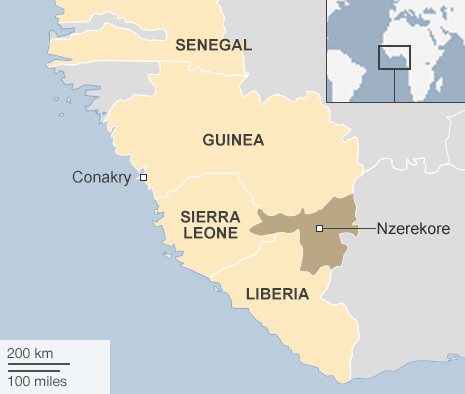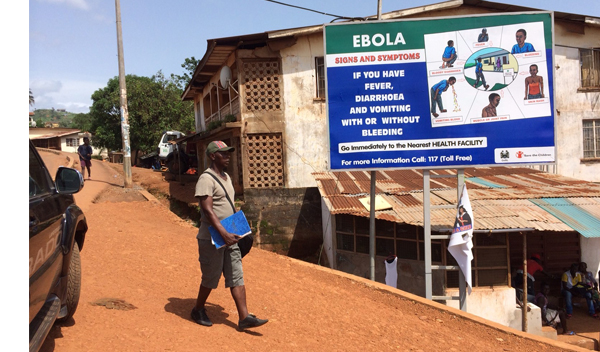932 Deaths By Ebola – Who is At Risk?
With the World Health Organization announcing Wednesday that 932 deaths had been reported or confirmed as a result of Ebola hemorrhagic fever, Saudi Arabia joined the list of countries with suspected cases.
“This is the biggest and most complex Ebola outbreak in history,” Dr. Tom Frieden, director of the U.S. Centers for Disease Control and Prevention, said.
On Wednesday August 6, the CDC raised the activation level of its Emergency Operations Center to Level 1, the highest state of alert. It is the first time the agency has issued such an alert since the 2009 H1N1 influenza pandemic.
Between July 31 and August 1, a total of 63 new cases and 61 deaths were reported.
The outbreak is the first for West African countries. This may be a contributing factor resulting in the lack of adequate health care training. The disease may be spreading due to health care workers failing to wear protective clothing when treating patients, according to the U.S. Centers for Disease Control (CDC).
Two U.S. humanitarian workers have become infected in addition to other health care workers. Experts say:
The CDC is taking precautions. They are working to educate health care workers to recognize the symptoms of Ebola and how to isolate patients who are infected.
On Saturday, August 2, 2014, Dr. Kent Brantly was transported from Liberia to Atlanta, Georgia after contracting Ebola. The 33-year-old, who has been fighting the spread of the virus, is the first known patient to be treated in the States. He landed at Dobbins Air Reserve Base in Georgia and was quickly rushed to Emory University Hospital in Atlanta.
According to the CDC, Brantly “seems to be improving.” The American doctor is one of two U.S. citizens infected. The second, Nancy Writebol, arrived in Georgia on August 5.
The two patients will be treated in an isolated unit, preventing the spread of the disease. Unit supervisor, Dr. Bruce Ribner, said “Everything that comes in and out of the unit will be controlled and it will have windows and an intercom for staff to interact with patients without being in the room.”
Currently, there is no FDA-approved treatment for Ebola. Emory doctors will carefully track the patient’s symptoms, vital signs and organ functions.
A third possible victim was identified at Mount Sinai Hospital in New York. The man, who arrived at the medical center early Monday, told doctors he had just returned from a trip to West Africa. After testing, however, the man does not seem to be infected with the disease despite similar symptoms.
Dr. Don Donahue’s Analysis
The announcement that Dr. Sheik Umar Khan has contracted the very disease he has been battling in Sierra Leone is a vivid example of the danger faced by healthcare workers and those they treat. Highly contagious and with an exceptionally high fatality rate — 90 percent of those infected in the current outbreak have succumbed to the disease. Ebola transmission occurs in humans via direct contact with blood or bodily fluids from an infected person (including embalming the dead) or by contact with contaminated medical equipment such as needles. This is a particular problem in poor African nations (Ebola exists only on that continent) with under-equipped hospitals and poor practice of universal precautions. Frequent exposure can result in contracting your patient’s illnesses.
There is a natural correlation to venues and diseases less dramatic — and scary — than Ebola. Clinical staff members treating communicable diseases from tuberculosis to influenza are exposed to those diseases. While we enjoy an abundance of medical materiel and generally effective communicable disease countermeasures, even these do not prevent all exposures. Influenza, for example, is transmissible before symptoms develop. This points, as always, to frequent hand washing, cough etiquette, staying current with vaccinations and encouraging employees, students and colleagues to stay home when ill.
A Communicable Illness Plan Is Necessary
One of the greatest threats facing businesses today is communicable illness/pandemic outbreaks. A communicable illness/pandemic has unique impacts on individuals, families, businesses and healthcare providers. The impacts are not lost physical infrastructure. The impacts are lost lives, lost work, lost revenue, lost wages and lost personnel. In a pandemic, everyone feels the impact whether they become infected or not.
No matter the flu strain, infection or other exposure, a Pandemic or Communicable Illness Plan is a critical component to every Business Continuity Plan today. The Firestorm Expert Council includes health expertise from the doctor who first identified SARS, former Surgeons General and experts in behavioral health and Post Traumatic Stress.
- Threats should be addressed as well as other similar, future health risks and communicable diseases. These additions will help improve the overall preparedness and effectiveness of current continuity plans.
- To augment the Communicable Illness/Pandemic Planning Toolkit, Firestorm can offer a comprehensive approach to preparedness for all communicable illness, where we will conduct a benchmark/gap analysis of a client’s Continuity and Pandemic Plans and review existing documents, policies, and procedures.
- Firestorm will identify plan activation triggers and monitoring plans.
- Once a Pandemic Plan is completed, training and testing will be conducted. The training makes all staff aware of their duties under the pandemic plan, will increase everyone’s awareness of preparedness issues and demonstrates where plans require modification. All plans must be tested.
Firestorm offers a communicable illness toolkit. Are you ready? Contact Firestorm for more information.
 “What should we do now?” “What should we say?”
“What should we do now?” “What should we say?”